The Lido: Happy Memories
by Jake Simpkin
I regularly visited the Lido, Southampton’s public open-air swimming pool, two or three times a week during my school holidays back in the 50s and 60s. Unfortunately, there’s no trace of it now, but the happy memories linger on.
I found it surprising, even as a boy, that an open-air pool should be situated between a coal fired powered station, and a cable factory, but in fact, it predated both. There had been an open-air public bath on the site since 1854 owned by Southampton Public Baths and Wash House Company. In 1890 it was bought by the Corporation and rebuilt, which included indoor ladies’ and gents’ pools at the front of the premises.
Walking through the entrance into the bright outside pool never lost its magic for me. The faint aroma of synthetic rubber, chlorine and soot, and that familiar sound of excited bathers will never leave me.
Traditionally, the lido was segregated with ladies’ changing rooms and terraces on the right, and gent’ on the left, but from the early sixties it slowly became mixed. The deep end fell to a depth of 16 feet, with a high diving board and a spring board covered in coconut matting.
A long wooden shoot stood nearby and was lubricated by water jets. On the far side was the café famous for its hot raspberryade, while nearby the filtration system cascaded water through filters that atomised the surrounding air with chlorine.
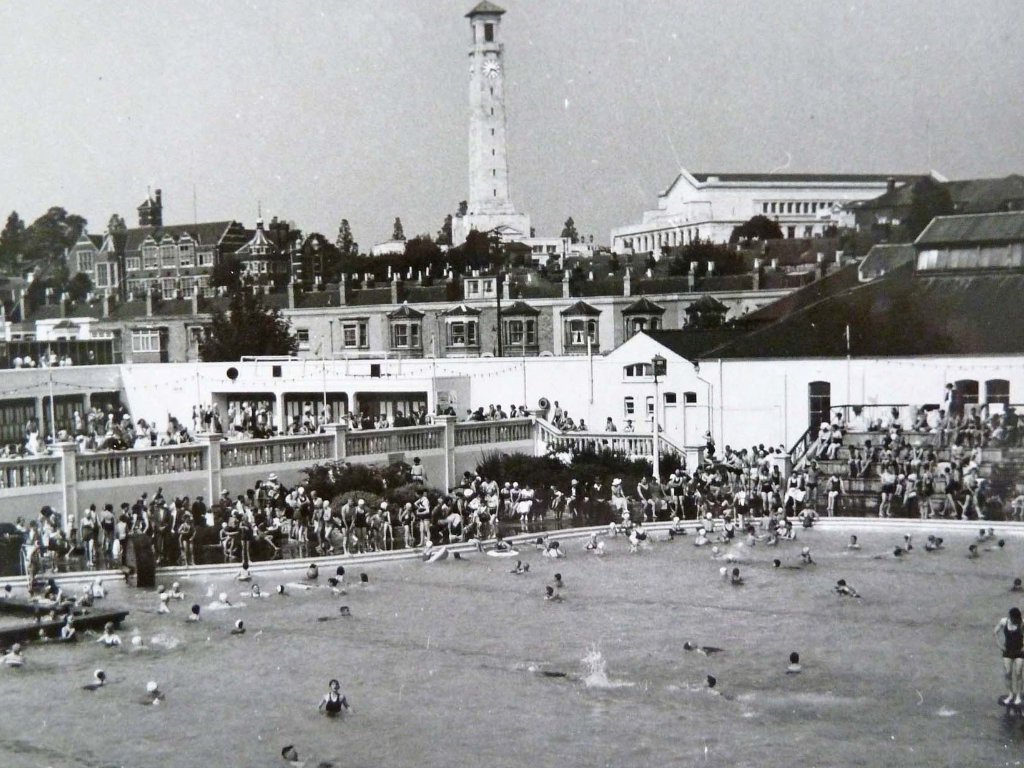
A popular meeting place for young people in the school holidays
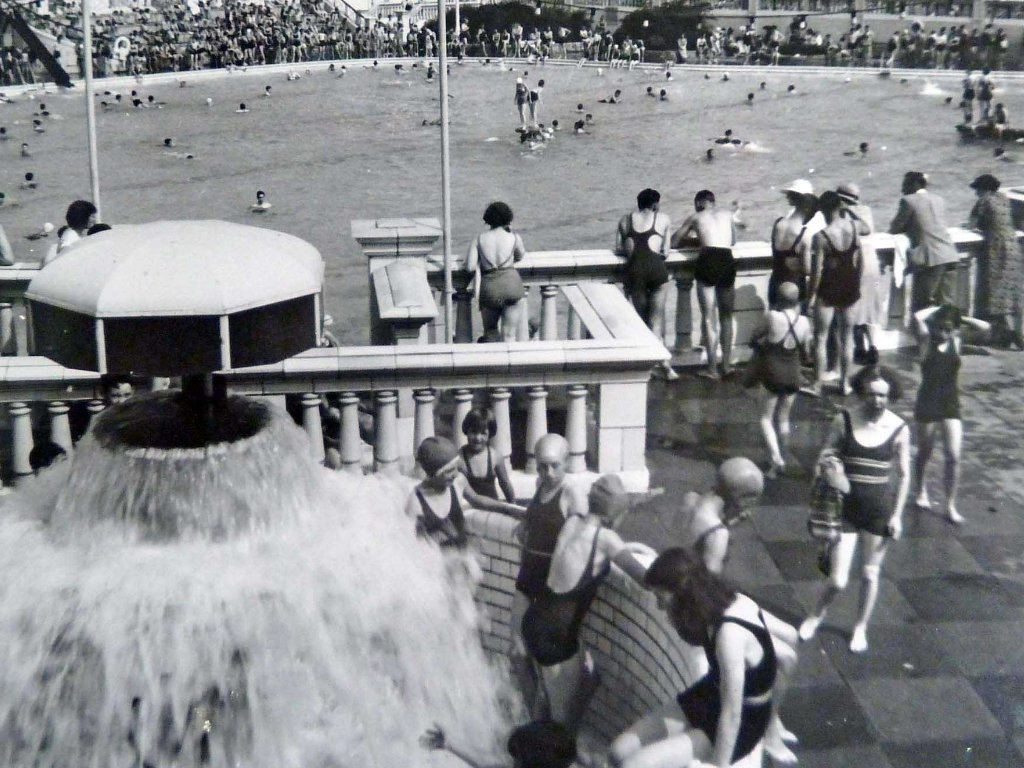
The filtration system cascaded water through
filters that atomised the water with chlorine
The third week of May was traditionally the time when Southampton Lido opened for the summer season. And ‘Oh boy’ was the water cold. Like most boys I would take pride in making a spectacular first plunge. My speciality was running up the steps of the big Chute and launching myself down it headfirst. I’ll never forget on one occasion, when the lubricating water jets had not been turned on, my screams of pain, from the friction burns on my chest, could be heard in the High Street!
I loved the atmosphere and the characters. Local seamen, between ships, would spin yarns, and through them it was possible to acquire sought after items from America, not available in the shops, such as Buddy Holly records, tab- shirts, and Levi jeans. I remember a lifeguard called Alfie, who sported a large tiger tattoo across his back, and a one-legged man who made spectacular dives off the high board.
Life was more disciplined then and lifeguards often shouted at the swimmers. Much credit is due to the general foreman, Ron Tubbs, who kept the pool immaculate despite the descending cinders from the adjacent power station. Harry Turner, nicknamed ‘Tosh’, was caretaker.

The pool drained for the winter deep clean
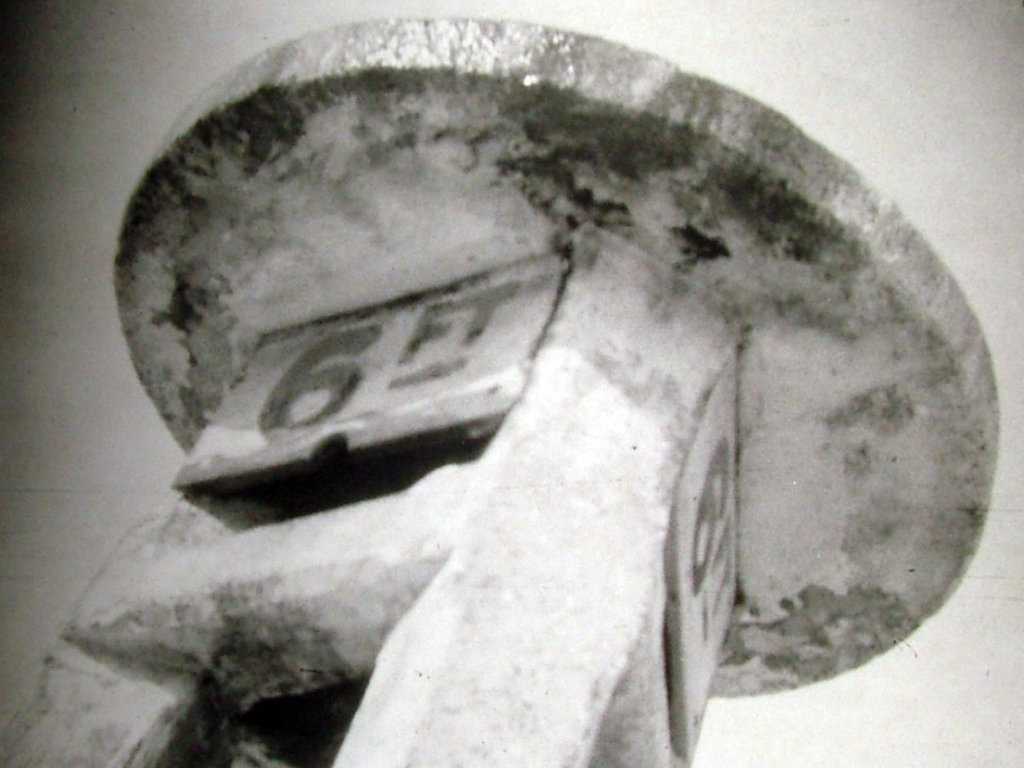
The traffic roundabout outside John Lewis is where the 6 feet marker stood
The Lido, as we knew it, resulted from major structural alterations in 1930, when new terraces, dressing rooms, café and filtration plant were built. During the worst years of the blitz the baths were closed and became much polluted with soot and grit.
However, in July 1943, after some repairs and a major clean-up, the Lido reopened, and was used by an international array of soldiers, and others, as they prepared for D-Day.
Southampton Baths had its share of disasters. In 1931 a 10-ton Corporation steamroller ran out of control at the top of Manchester Street, continued down the hill and crashed through the wall of the slipper baths. One bather jumped clear, and another crawled out of the rubble; miraculously nobody was injured. In 1968 and 1969 there were fires, but by this time a question mark was hanging over the future of the pool.
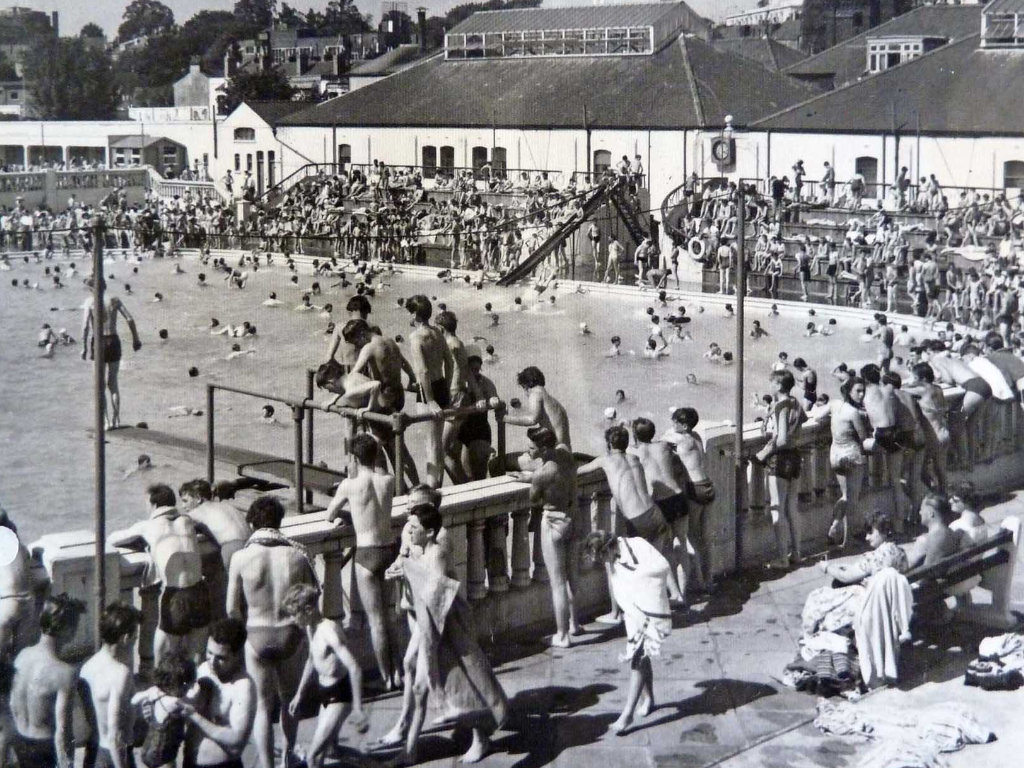
During the hot summers of 1975 and 1976 attendance records were broken
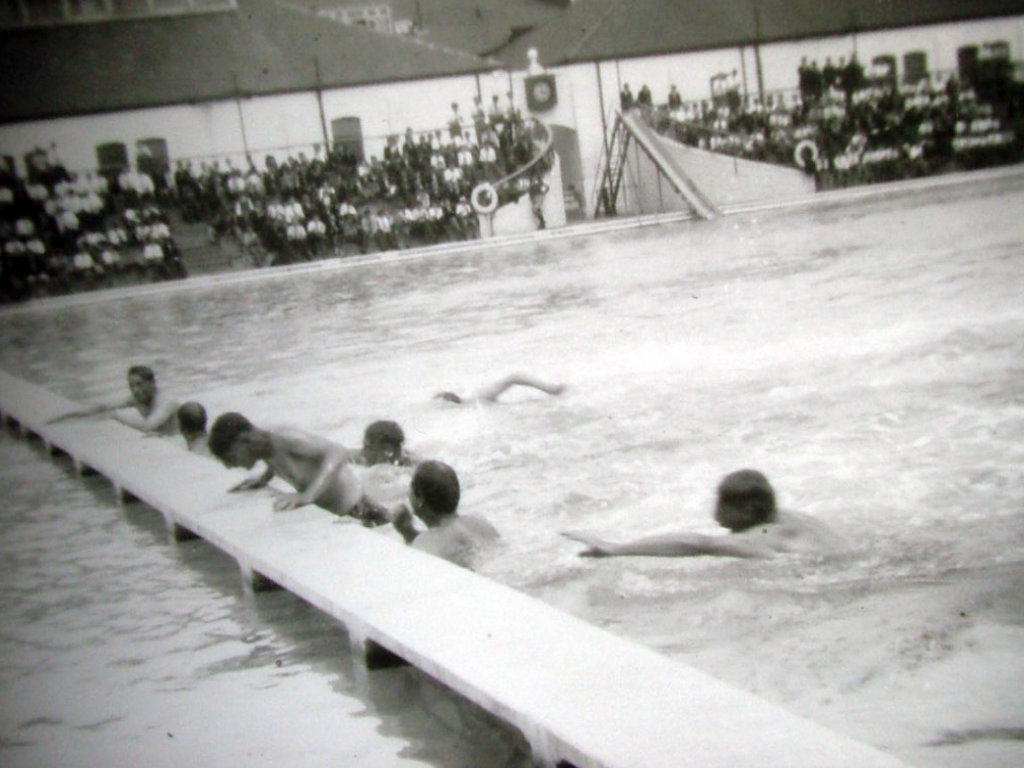
Taunton's School Masters' Race1958. Doug Avis (PT) 3rd. from left; Charles Clark (history) 5th. from left nearest to camera Peter Wainwright (woodwork)
Maintenance costs were heavy, and a new filtration plant was needed. There was also the newly proposed Western Esplanade Development Plan, which dragged on for years! From 1973 the Lido was on borrowed time, and yet, two of its greatest seasons were still to come. During the hot summers of 1975 and 1976 attendance records were broken, when on hot days 3000 people were passing through the turnstiles.
The Lido traditionally closed the season after the second week of September and in 1977 it closed for the last time. It was left to decay for 4 years; weeds grew on the terraces and mud lined the pool bottom. I hated seeing it like that.
On the outside wall of the terraces, facing the old army camp, a large motto from 1930, beautifully written in 3-foot letters read ‘SWIM TO BE FIT, BE FIT TO SWIM AND BATHE IN WATER FIT TO DRINK’, was now faded beyond recognition, along with the additional 50s graffiti, ‘Cut the Call-Up’.
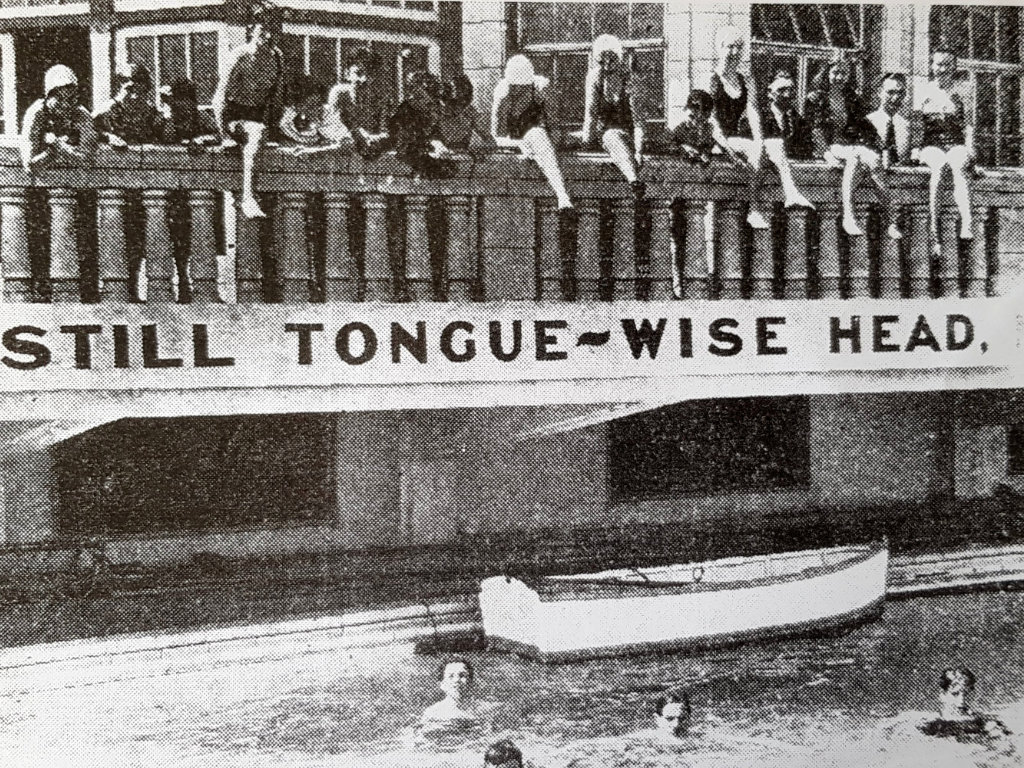
A WW2 sign painted under the balustrades outside the cafe

The lido was left to decay for 4 years after it closed
Eventually in 1981 the pool was demolished, and the city’s builders were invited to fill the pool with rubble. The stone balustrade which surrounded the terraces was removed. I wonder where it went.
I reminisce now and find myself trying to figure out where the 6-foot concrete marker was that stood in the middle of pool. My guess would be that it stood not far from the roundabout, outside the entrance to John Lewis.
Toys-Are-Us now stands on the site of the Power Station, and the West Quay shopping Mall covers much of the old Pirelli site. And, for those who braved the cold water, isn’t it ironic that unbeknown to us, there existed below the pool vast quantities of hot water, now the source of Southampton’s geothermal bore.
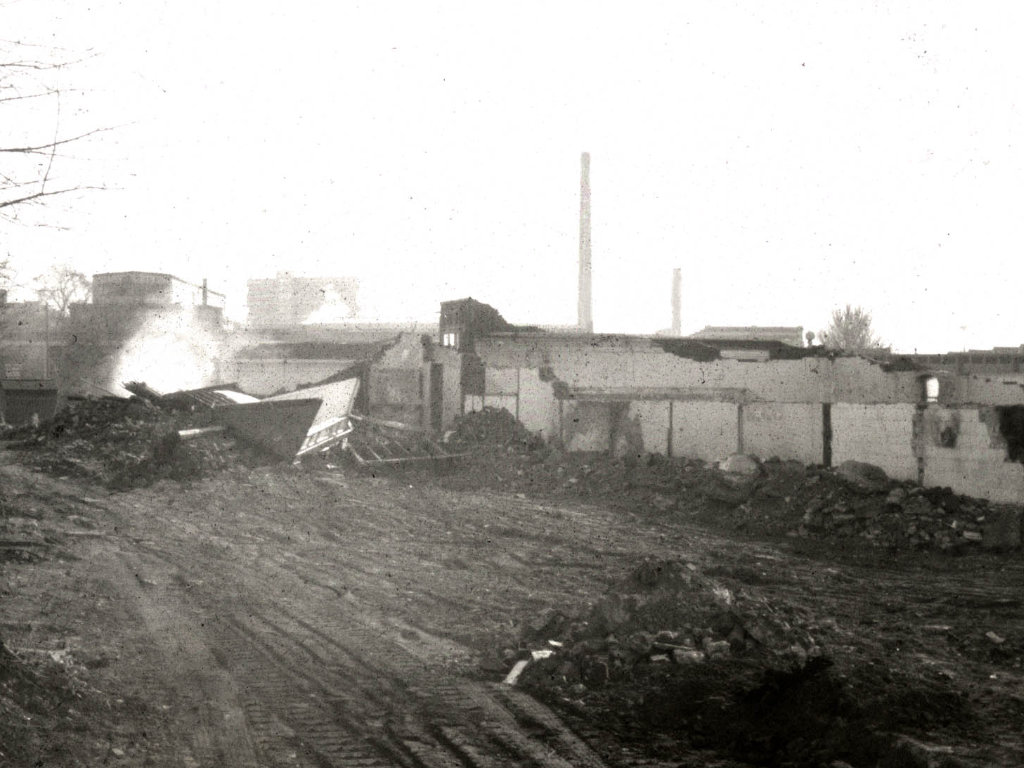
Local builders dump their rubble in the pool
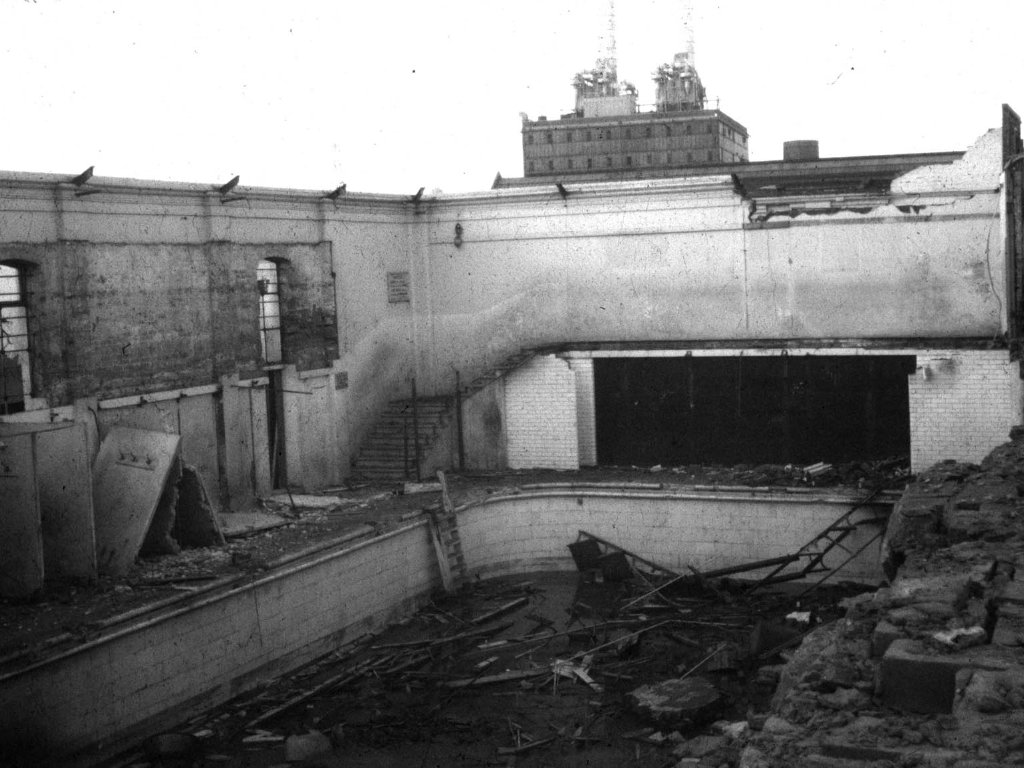
The ladies inners under demolition. The power station can be seen behind
Comments
Hi, On your page about the Lido in Southampton you asked if anyone knew where the balustrades went after the Lido was demolished. I am confident that a small section was sold to a man in Dale Road towards the hospital end of the road where it starts to bend.
He wanted to save a bit of local history, and this was reported in the Echo at the time. I used to point it out to folks when we passed for several years. I say used to because they disappeared recently. I hope this helps. Robert Grice
My first visit to the Lido was in1935 with my Mother where I was pushed in and resolved never to go there again. My second visit was in 1944. I was fortunate to be taken on as a future apprentice electrician at Pirelli General Cable Works in the summer of 1943.
After much persuasion from my fellow work mates, I finally took the plunge, and within a week I was taught how to swim. From then on, us apprentices enjoyed our sessions in the lido and in the inner baths during the winter whatever the weather was like outside.
Pirelli’s was ideally situated for us and only took us only a few minutes to get immersed in the cold and sometimes freezing water. Someone may recall the names of some of us. There was Steve Hill, Ray Woodley, Ginger Fry, Bill Oldberry to name only a few. After our dinner time swim, we had to make a mad dash back to the factory and clock on before the 1o’clock whistle went. They were good days and bring lots of happy memories. Regards Ken Froud.
